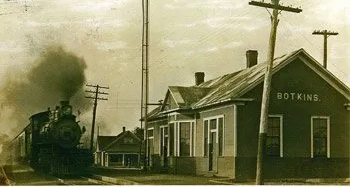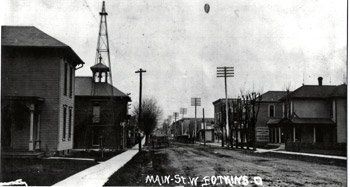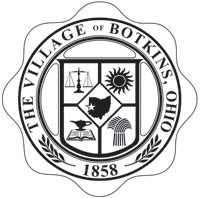Botkins History
Where the Waters Divide and the People Unite
Almost a million years ago, large glaciers covered nearly all of Ohio. The area known as Botkins was last covered by glaciers during a glacial time period referred to as the Wisconsin period. As this final glacier began to melt away, anywhere between 23,000 and 13,000 years ago, humans began to migrate to this area.
These earliest settlers to North America are called Paleo-Americans. Archaeology evidence suggests these early hunter-gathers came from Asia via the Bering Strait. Some of the earliest evidence of Ice Age man in Ohio was found right outside of Botkins. Local amateur archaeologist Dave "Doc" Mielke found what experts have confirmed to be the earliest blades and tools (hotlink to photos) of these prehistoric peoples. It is believed that evidence found by Mielke originated from Southern Indiana, indicating the west-to-east migration of early North Americans.
In the modern age, the area between the Maumee River and the Ohio River was mostly controlled by the Shawnee Indian tribe. Other tribes, such as the Delaware, Mingo (Seneca), Miami, Ottawa, and the Wyandot, traveled through this region continuously. European exploration brought French traders and English forts to West Central Ohio. Most Indians were forced from this area on to reservations in what is current-day Oklahoma in the early 1800s.
Our village's namesake, Richard Botkins, was an industrious visionary. Born in 1803, He asked that the land that is today Botkins be plotted in 1858. He was smart enough, or perhaps crafty enough, to have the D & M build a railroad depot in town. When he passed away his son named this place "Botkinsville." A more thorough history can be found in the following links, which were prepared for the Village of Botkins 150th Anniversary.



